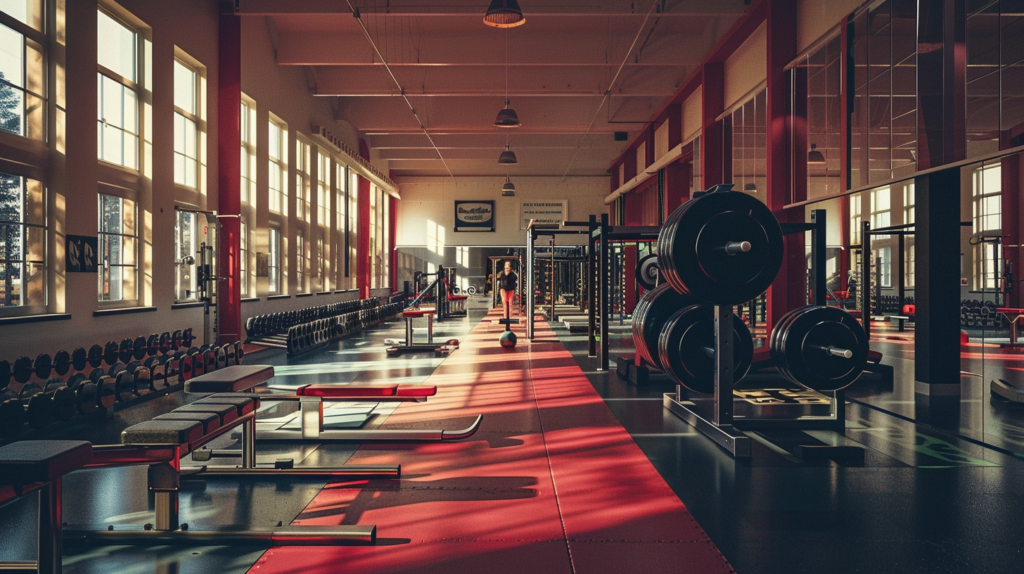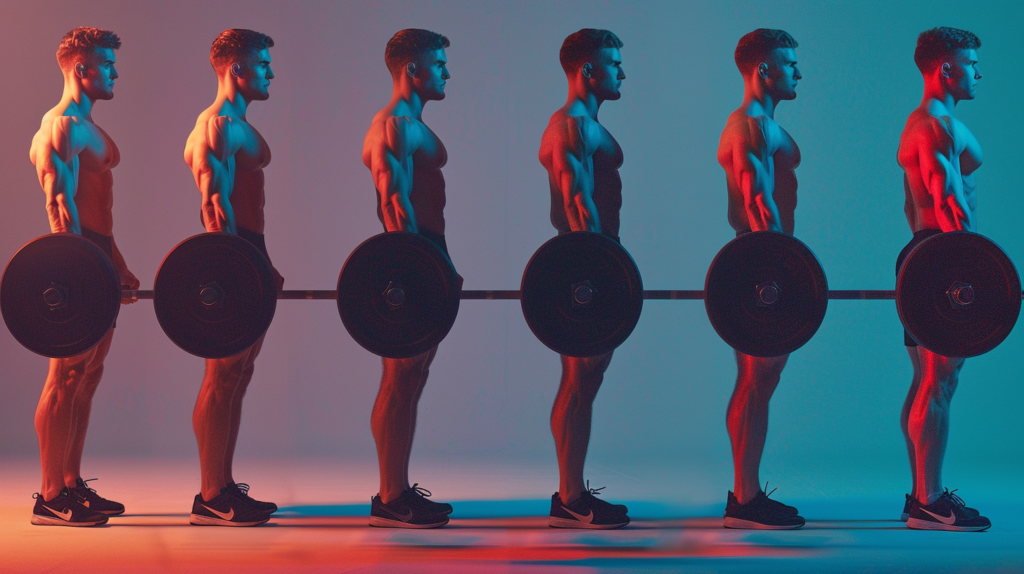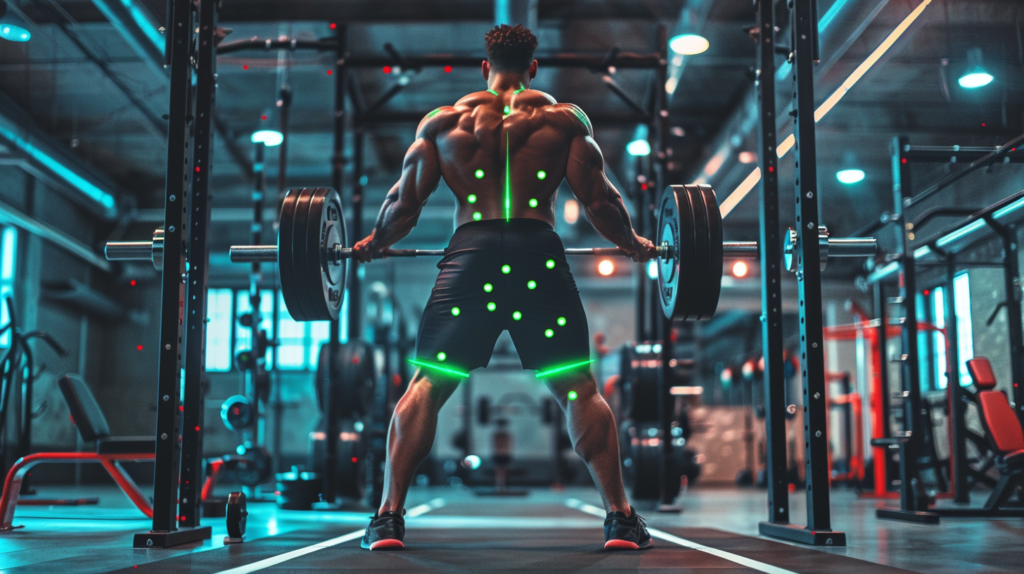To master weightlifting for muscle growth in 2024, you need to understand muscle hypertrophy, which involves increasing muscle fiber size through resistance training. Focus on compound movements like squats and deadlifts, and balance them with isolation exercises. Proper lifting techniques are essential to avoid injuries and guarantee effective muscle engagement. A well-structured workout plan should include progressive overload, adequate nutrition with a calorie surplus, and sufficient protein intake. Recovery strategies such as active recovery, ideal sleep, and hydration are also critical. By following these principles and adjusting your routine based on progress, you’ll be on the path to significant muscle growth—continue to learn how to enhance each aspect for maximum results.
Key Takeaways
- Muscle Growth Fundamentals: Muscle hypertrophy involves micro-tears in fibers from resistance training, requiring adequate nutrition and rest for repair.
- Essential Exercises: Compound movements like squats and deadlifts, along with isolation exercises, are crucial for balanced muscle growth.
- Proper Lifting Techniques: Maintaining a straight back and tight core during lifts reduces injury risk and promotes effective muscle engagement.
- Progressive Overload: Gradually increasing workout intensity through progressive overload is essential for strength adaptation and muscle growth.
- Nutrition and Recovery: A calorie surplus, balanced macronutrients, and adequate hydration are vital for muscle recovery and growth.
Understanding Muscle Growth Fundamentals
Understanding muscle growth fundamentals is vital for anyone serious about weightlifting. When you lift weights, you’re not just moving metal up and down; you’re initiating a complex biological process known as muscle hypertrophy.
This process involves the growth and increase in the size of muscle fibers, which can be broken down into two main fiber types: Type I and Type II.
Type I fibers are slow-twitch, meaning they contract slowly but can sustain activity over a longer period. These fibers are essential for endurance activities like long-distance running or cycling.
On the other hand, Type II fibers are fast-twitch and provide explosive power for short bursts of activity, such as sprinting or heavy lifting.
Muscle hypertrophy mechanisms involve micro-tears in muscle fibers caused by resistance training. Your body then repairs these tears by fusing muscle fibers together to form new, stronger ones.
This repair process requires adequate nutrition and rest to guarantee peak muscle growth. Understanding fiber type differentiation helps you tailor your training program to target specific muscle groups effectively, maximizing your potential for growth.
Choosing the Right Equipment

As you commence on your weightlifting journey, selecting the right equipment is vital for effective and safe training. The first step is to familiarize yourself with barbell variations—standard, Olympic, and specialty bars—each designed for specific exercises like squats, deadlifts, and bench presses.
Resistance bands can also be a versatile addition to your arsenal, providing continuous tension and challenging your muscles in different ways.
For comfort and grip, consider investing in weightlifting gloves. They not only protect your hands from blisters but also enhance grip security during heavy lifts.
Adjustable dumbbells offer convenience by allowing multiple weights in one piece of equipment, saving space and money.
Structural equipment like squat racks and Olympic plates are essential for advanced training. Squat racks provide stability and safety during heavy lifts, while Olympic plates guarantee accurate weight distribution.
Proper footwear is equally important; look for training shoes that offer stability and support.
Additional accessories include lifting belts for core stability during heavy lifts, foam rollers for post-workout recovery, and workout mats for comfortable floor exercises.
Each piece of equipment plays a role in optimizing your workout routine and guaranteeing you make progressive gains without compromising safety.
Essential Weightlifting Exercises

With the right equipment in place, you’re ready to focus on the exercises that will drive your muscle growth. Mastering essential weightlifting exercises is vital for peak muscle development.
Compound Movements
Start with compound movements, which target multiple muscle groups simultaneously. Squat variations and deadlift techniques are foundational; they engage your lower body, core, and upper body.
The bench press is another key compound exercise that focuses on your chest, shoulders, and triceps. The overhead press targets your shoulders and triceps but also engages your entire core for stability.
Olympic Lifts
If you’re advanced, incorporate Olympic lifts like the clean and jerk or snatch. These lifts are complex but highly effective for building power and muscle across multiple muscle groups.
Accessory and Isolation Exercises
Complement your compound movements with accessory exercises to target smaller muscle groups. Isolation exercises such as bicep curls or tricep extensions can help balance out your physique.
Additional Training Methods
Don’t forget about bodyweight training for added versatility and mobility drills to maintain flexibility.
These elements guarantee well-rounded fitness and prevent injuries.
Proper Lifting Techniques

How often do you find yourself focusing on the weight you’re lifting rather than the way you’re lifting it? Proper lifting techniques are essential for both safety and muscle growth. Let’s explore the essentials.
First, your lifting posture is important. Maintain a straight back and tight core throughout the lift. This not only protects your spine but also guarantees that you’re engaging the correct muscles.
For instance, during squats, keep your chest up and shoulders back to help distribute the weight evenly.
Next, consider grip variations. Different exercises require different grip styles to maximize effectiveness and reduce injury risk.
For example, a barbell deadlift typically involves an overhand grip with hands slightly wider than shoulder-width apart. However, a row might require an underhand or neutral grip depending on the variation.
Building a Balanced Workout

A well-structured workout plan is vital for achieving balanced muscle growth and overall fitness. When I talk about a balanced workout, I’m referring to one that addresses muscle symmetry and incorporates a variety of exercises.
To build a balanced workout, it’s important to guarantee that each muscle group is equally engaged. This means not just focusing on the mirror muscles like biceps and chest but also working on your back, legs, and core. Aiming for muscle symmetry helps prevent imbalances that can lead to injuries and uneven development.
Workout variety is key here. Instead of sticking to the same routine week after week, I recommend mixing it up with different types of exercises and training styles.
For example, incorporating compound movements like squats and deadlifts alongside isolation exercises such as curls and tricep extensions will help you achieve thorough muscle growth.
Progressive Overload Principles

Progressive overload is the foundation of any effective weightlifting program aimed at muscle growth. It involves gradually increasing the intensity of your workouts to continue challenging your muscles and stimulating growth. This principle is built on the concept of progressive resistance, where you incrementally add load variation to your lifts over time.
To implement progressive overload effectively, focus on strength adaptation by regularly increasing the weight or resistance you’re lifting. Training frequency also plays an important role; making sure you’re working out each muscle group frequently enough allows for more opportunities for muscle adaptation.
However, beware of the performance plateau—this can occur when your body adjusts to the current load and stops growing stronger.
Intensity management is key. Periodize your workouts to vary the intensity and volume over different periods, preventing stagnation and avoiding burnout. Properly managing your workout periodization guarantees that you’re always pushing forward without hitting a dead end.
Nutrition for Muscle Growth

Nutrition plays an essential role in muscle growth, and I find myself emphasizing its importance in every weightlifting regimen. To optimize your muscle-building journey, you need to focus on several key nutritional aspects.
First, make sure you’re in a calorie surplus to provide your body with the necessary energy for muscle repair and growth. This means consuming more calories than you burn, but not so many that you gain excessive fat.
Protein sources are significant; aim for 1.2 to 1.6 grams of protein per kilogram of body weight daily from sources like lean meats, fish, eggs, dairy, and plant-based options.
Meal timing and nutrient timing are also crucial. Spread your protein intake across three to five meals to keep your muscles fueled throughout the day. Additionally, consider meal prepping to maintain consistency and make sure you’re getting the right balance of macronutrients.
Hydration is often overlooked but is essential for muscle function and recovery. Aim to drink at least eight glasses of water a day.
Micronutrient balance is also important; make sure you’re getting enough vitamins and minerals through a varied diet or supplementation if necessary.
Lastly, supplementation strategies can help fill any nutritional gaps. Creatine and protein supplements are popular choices among weightlifters for their proven benefits in muscle growth and performance enhancement.
Recovery Strategies

Recovering from intense weightlifting sessions is just as important as the workouts themselves. To master muscle growth, you need to focus on several key recovery strategies.
First, prioritize active recovery techniques. This includes light cardio like walking or cycling to help your body clear out metabolic waste products and promote blood circulation. Additionally, incorporate foam rolling and mobility exercises to maintain flexibility and reduce muscle soreness.
Sleep optimization is essential; aim for 7-9 hours of quality sleep each night to allow your muscles to repair and grow.
Hydration strategies are also critical—ensure you drink enough water throughout the day to keep your muscles hydrated and support recovery.
Stress management is another important component. Chronic stress can impede muscle growth and overall health, so find effective ways to manage it, such as through meditation or deep breathing exercises.
Recovery nutrition should be tailored to provide the necessary protein, carbohydrates, and healthy fats to support muscle repair.
Finally, consider incorporating deload weeks into your training program to allow your body a periodic break from intense lifting.
Avoiding Common Injuries

When you’re pushing your limits in the gym, it’s important to be aware of the common injuries that can sideline your progress. Injury prevention is key to maintaining consistency and achieving muscle growth.
Start with thorough warm-up routines that include mobility exercises to enhance flexibility and reduce stiffness. Body awareness is significant; listen to your body and recognize early signs of overtraining, such as persistent fatigue or decreased performance.
Strength imbalances can also lead to injuries, so make certain you’re addressing these through balanced training programs. Ergonomic practices, like proper lifting techniques and equipment use, are essential for protecting your joints and muscles.
Regular check-ins on joint health can help you identify potential issues before they become serious problems.
Recovery modalities such as physical therapy or chiropractic care can be integral in rehabilitation strategies if an injury does occur. By being proactive about these measures, you’ll be better equipped to avoid common injuries and continue on your path towards muscle growth without unnecessary setbacks.
Tracking Progress and Adjustments

Tracking your progress is essential for optimizing muscle growth and guaranteeing your weightlifting regimen remains effective. To do this, you need a systematic approach to progress assessment. Start by keeping a detailed workout log where you record the weights, reps, and sets for each exercise. This data will help you see trends over time and identify any plateaus.
Regularly take body measurements and track your weight to monitor overall muscle growth. Photos can also be a useful tool for visual progress tracking. Additionally, consider using a scale or body fat calipers to get precise measurements.
Goal setting is another critical component of tracking progress. Set both short-term and long-term goals, breaking them down into manageable milestones. For example, aim to increase your squat by 5 pounds every two weeks or achieve a certain number of pull-ups within a set timeframe.
Adjustments should be made based on your progress assessment. If you’re not seeing gains, it might be time to change your routine—whether that’s increasing weight, altering your rep range, or modifying your diet.
Stay flexible and be willing to adapt your strategy as needed to keep your muscle growth on track. Consistent evaluation and adjustments guarantee continuous progress and liberation from stagnant routines.
Frequently Asked Questions
Can I Weightlift During Menstruation?
Absolutely, I can weightlift during my menstrual cycle. However, I might need to make workout adaptations based on how my body feels. Listening to my body and adjusting intensity or volume as needed is key.
How Often Should I Change My Weightlifting Routine?
To optimize muscle growth, I change my weightlifting routine every 4-6 weeks to maintain progressive overload. This frequency guarantees I’m challenging my muscles without causing plateaus, keeping my progress consistent and liberating.
Are There Specific Weightlifting Exercises for Different Age Groups?
Ironically, age doesn’t dictate your weightlifting ambitions, but it does require age-specific techniques. Youth adaptations focus on growth and injury prevention, while senior modifications emphasize recovery strategies and joint safety. Train smart, not hard.
Can Weightlifting Help With Bone Density Improvement?
Absolutely, weightlifting can greatly enhance bone health. Through strength training, you stimulate bone growth and density, reducing the risk of osteoporosis and fractures. It’s a powerful way to fortify your bones for a stronger, healthier you.
Do I Need a Personal Trainer to Start Weightlifting?
Imagine a phoenix rising from ashes—your transformation begins with weightlifting. While a personal trainer can guide you, it’s not necessary. Start with beginner tips: focus on form, consistency, and patience. Leveraging these weightlifting benefits, you’ll find your liberation in every lift.
Conclusion
Mastering weightlifting for muscle growth is no cakewalk, but with the right tools and techniques, you can hit the ground running. By grasping the fundamentals, choosing the right equipment, and perfecting your lifting techniques, you’ll be on track to building a balanced workout routine. Don’t forget nutrition and recovery—they’re the icing on the cake. Track your progress and adjust as needed. Remember, consistency is key, and patience is a virtue. Stay focused and you’ll see results in no time.













